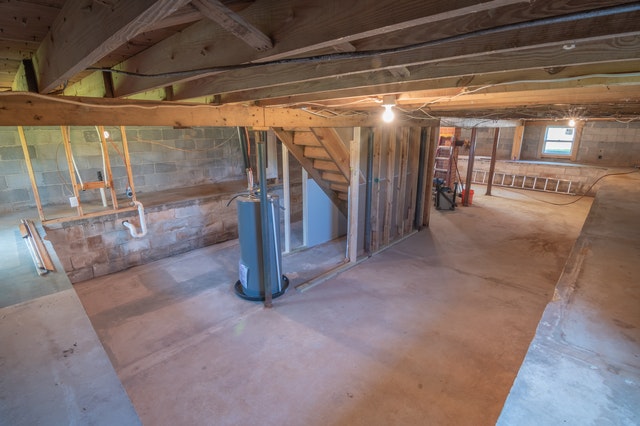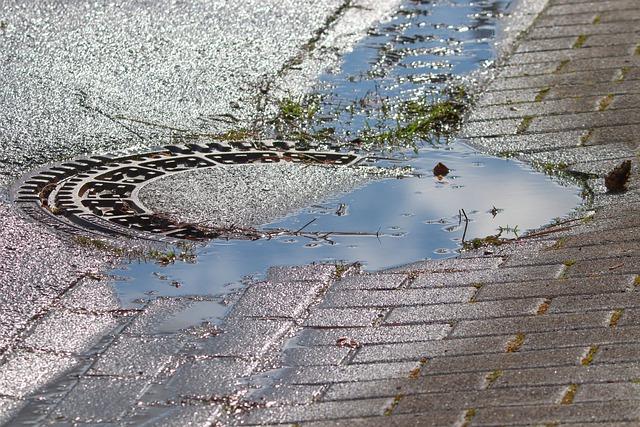
Waterproofing the basement is one of the ways to protect your home from damage and molds. It is also a way of preventing leakages or cracks.
By waterproofing, you keep the basement dry, protect the foundation from decaying due to the long capture of water, and prevent molds build-up.
If you seek to know more about this process, you’re in the right place!
In this article, we shall tell you all you need to know about basement waterproofing and the reasons it is essential for every home.
What is Basement Waterproofing?
Basement waterproofing is the process of controlling and managing the water that enters your home through the basement. It involves using various techniques to prevent water from percolating into the house or basement by expelling moisture to keep it dry.
You can do this by installing a drainage tile below the floor to keep water pressure from building up from the outside.
Experts often do this by using various tools like the sump pump or any other related material. The sump pump is designed to detect water and capture it around the basement to the pump. This often requires standard voltage electrical outlets.
Things You Must Know about Basement Waterproofing
Even if your house is built on a dry field, you might likely have water in your basement the same way those who live in riverine areas do.

Why is Basement Waterproofing So Important?
People who stay around rivers, streams, dams, or beaches are not the only ones who need basement waterproofing because of the place they find themselves; everybody needs it.
While water-logged area residents are more prone to this problem, it is advisable for dry land residents to also be cautious.
This is because water doesn't just go directly to the earth and disappear forever when it rains. It percolates through the soil and stores up somewhere. It often stores differently, depending on the type of soil surrounding the house.
How Does Water Get to the Basement of a Building?
When you build a house on a bare field and it rains on the ground, the water enters the soil around the foundation of the building. It enters through its loose pores just as blood is distributed in the body through arteries, veins, and capillaries,
The soil accumulates a lot of water when this happens. If the building does not have any waterproof, the water will work its way through the soil and find its path to the basement of the building.
The water is not pure and invariably acidic. It will break down the blocks around the foundation by corroding them. And make them disintegrate and become soft over time.
This enables the water to start penetrating the building, mostly through the hollow cover. Little by little, this will lead to hydrostatic pressure inside the wall.
As corrosion occurs, you will discover little pin-holes that eventually allow the water to start entering the building.
The Effects of Lack of Basement Waterproofing
Here, we shall discuss the reasons why you need to have a waterproofed basement in your home and the dangers you’re likely exposing your family to if you don’t have one.

- Bowing Wall
The weight of a building rests directly or indirectly on the wall of the basement. When any of these gets weak or bowed, it jeopardizes the entire stability of the building.
Lack of basement waterproofing can lead to bowing of the wall, especially by the constraint of water pressure caused by hydrostatic pressure. This is one of the main reasons for the emergence of bowed walls.
They usually appear unexpectedly when the soil around the house is saturated with water; then it forces the earth to expand and press against the foundation.
- Sagging Floor
When your building doesn't have basement waterproofing and the area of the foundation gets saturated, it loses rigidity and starts to bend. The floor then begins to sag due to the heavy pressure and weight of the overlying materials.
This can be prevented from happening by waterproofing the basement area to prevent water from entering the foundation and corroding the blocks; hence, retaining its rigidity.
- Damage to the Foundation of a Building
The foundation is the spot upon which all other buildings rest. So, the building is in jeopardy when the foundation is faulty.
Lack of basement waterproofing will damage the soil's integrity below the footing of the building. This leads to damage to the outside of the building including its foundation. This occurs when water saturates the foundation and it decays.
When this happens, the water weakens the foundation and pressurizes it by finding its way to occupy other available spaces. This leads to more pressure on the building's weight and cracks begin to originate.
- Molds Build-Up
If you have moisture under the foot of your building, be assured of an outgrowth of molds.
If you’re wondering how mold grows on concrete, it’s simple. Concrete does not produce food for mildew but the dust from your basement is enough source of food and nutrient for them. And the water in the basement makes it a complete habitat for them, as they've got all that’s required to survive.
This can, in turn, lead to loss of integrity in the wall of the building and constitute sagging walls.
Molds can cause destructions. Some are beneficial to humans in edible substances while some are very destructive to buildings. They seem to work slowly, but they destroy a building when you least expect it.
How to Keep the Basement Dry
Having explained how water tension affects the foundation of buildings, it is important to find the means to keep the basement as dry as possible at all times. Below are some of the ways to do that.

- One of the most productive strategies to keep out water from the basement is by installing an interior drainage system that helps in reducing hydrostatic pressure or lateral pressure.
- You can prevent water from seeping into the basement floor by installing a drain tile at the angle where the wall meets the floor. By doing so, you minimize and seize the water that enters the basement.
- Clean gutter and well-channeled drainage can also help to keep the basement dry if you have a very rough, untidy, and clogged drain with poor drainage.
- You can chop off leaves, detritus, or garbage and replace them with a perfect leaf guard and downspout extender. This will help to direct the water away from the foot of the home to prevent the soil around from getting saturated.






2 comments
Trisoul Technologies
Hi, Welcome to Trisoul Technologies, A, Leading name in waterproofing, epoxy waterproofing, and waterproof coating solutions, delivering long-lasting protection for homes, offices, and industrial structures. Our expert team ensures precision application using advanced materials and techniques to safeguard your property from water damage. Choose Trisoul for reliable, high-quality waterproofing services that stand the test of time. Call us @8105634002 for Immediate Services.
Raul
Valuable content! Waterproofing safeguards interiors and strengthens the foundation against water damage.
Leave a comment
This site is protected by hCaptcha and the hCaptcha Privacy Policy and Terms of Service apply.